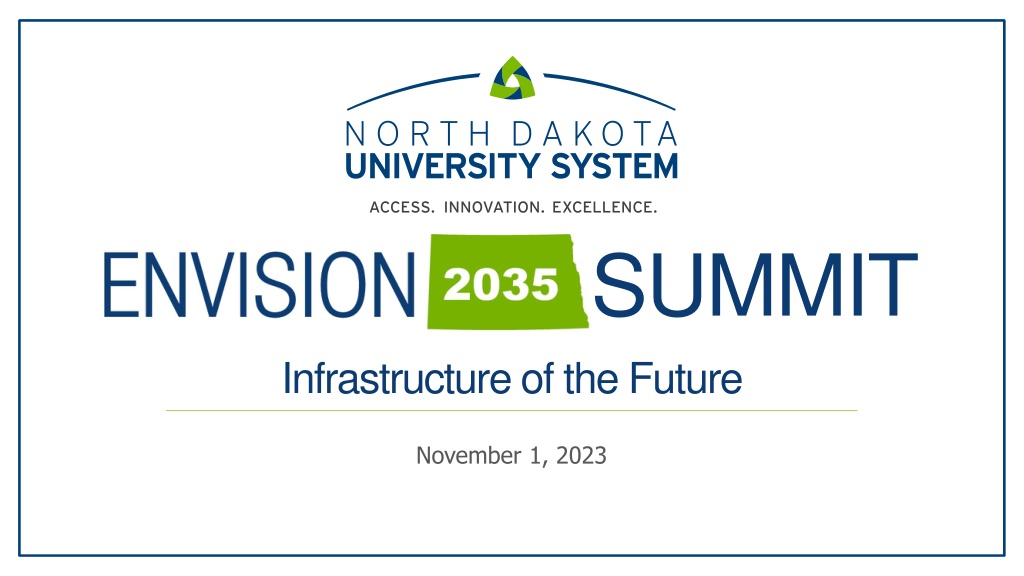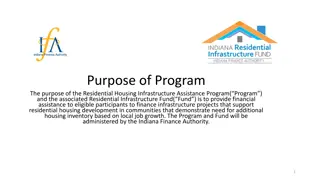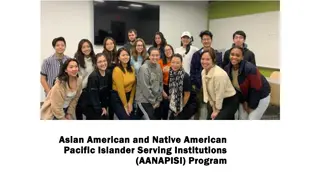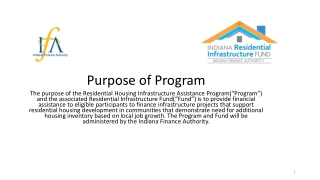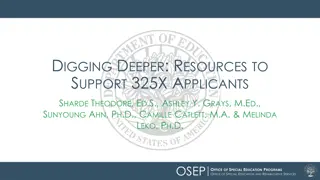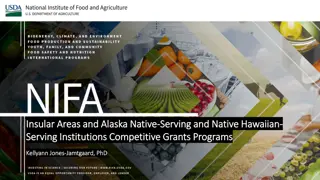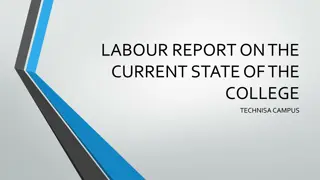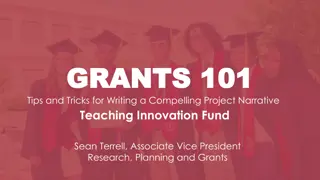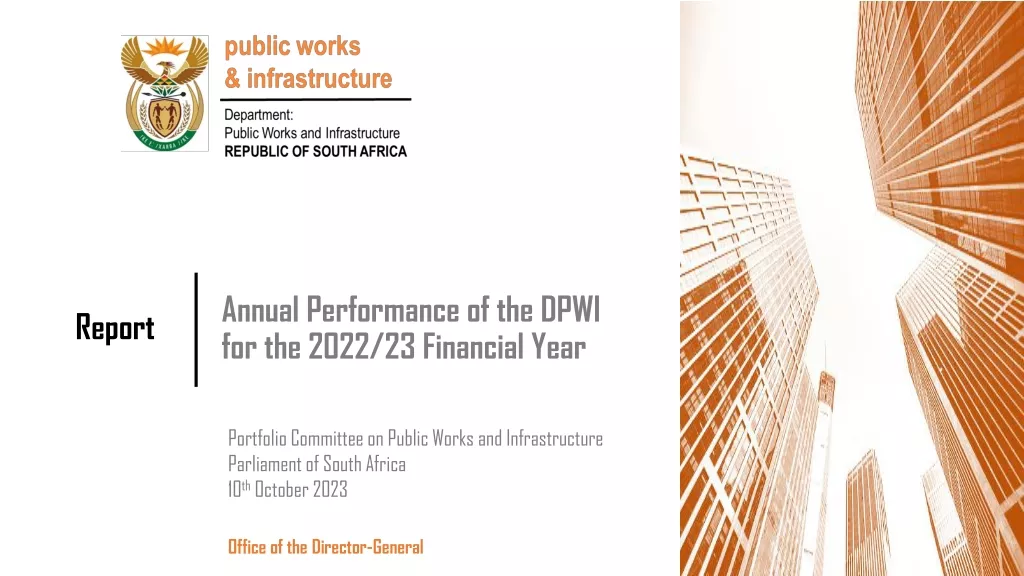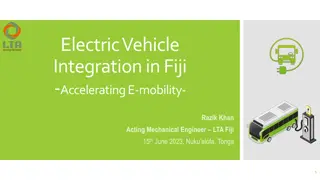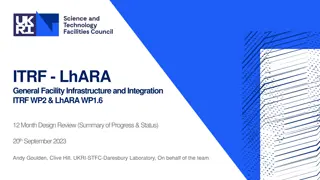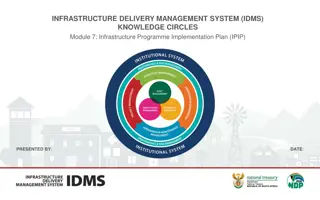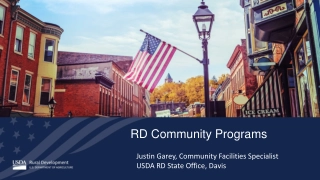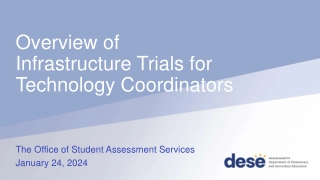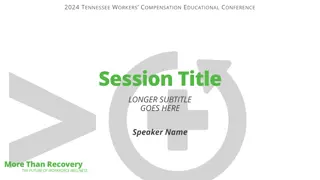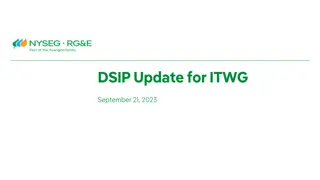Future-Ready IT Infrastructure for Educational Institutions
Study group participants discussed the importance of modern IT infrastructure in meeting the evolving needs of students, faculty, and workforce in education. The focus was on centralizing or fragmenting IT decisions, ensuring flexibility for various learning modalities, and implementing security measures to advance the state's network capabilities. Recommendations included continuous development of the Security Operations Center, migration to cloud services, and alignment with the changing higher educational landscape for enhanced technological support.
Download Presentation
Please find below an Image/Link to download the presentation.
The content on the website is provided AS IS for your information and personal use only. It may not be sold, licensed, or shared on other websites without obtaining consent from the author. Download presentation by click this link. If you encounter any issues during the download, it is possible that the publisher has removed the file from their server.
Presentation Transcript
SUMMIT Infrastructure of the Future November 1, 2023 1
Study Group Participants Alan LaFave, co-chair Becky Collins, BSC Carol Flaa, BSC Mile Ellingson, Director of Facilities, NDSU Mike Pieper, AVP for facilities, UND Joe Tykwinski, CIO, VCSU Jessica Gortmaker, Director of Facilities, VCSU Darin King, Vice Chancellor, NDUS Rick Tonder, Director of Facilities Planning, NDUS Dr. Mark Hagerott, NDUS Chancellor, ex-officio Jerry Rostad, NDUS Vice Chancellor, ex-officio John Warford, co-chair DeAnna Zink, Foundation CEO, UND Jason Fincel, NDSA president (NDSU) Jace Beehler, Chief of Staff, Governor s office Rep. Steve Swiontek, ND State Representative Kuldip Mohanty, CIO, NDIT (his EA Raulie Berthold) 2
Infrastructure of the Future IT Infrastructure Physical Infrastructure 3
IT Infrastructure Ensuring information technology infrastructure is ready to meet the needs of students, teachers and the workforce Determine kind of infrastructure necessary to support the delivery of education Centralized or fragmented IT infrastructure decisions IT flexibility to meet various learning modalities 4
IT TOPIC: Working Together METHODOLOGY Full committee discussion Sub-committee discussion Sub-committee report/recommendation 5
IT TOPIC: Working Together RECOMENDATION: CONTINUE TO DEVELOP Continue to refine and develop the capacity and capabilities of the NDUS systemwide Security Operations Center. Continue to collaborate with the North Dakota Information Technology Department to: o continually improve the capabilities and resilience of the state network. o continually improve the security posture of the state. Increase the pace of the migration to cloud services with the intent of reducing the size/scope/need/expense of local data centers. 6
IT TOPIC: Effective Planning CALL TO ACTION Ensure IT infrastructure is part of the institutional 10-year facilities master plan. As federal broadband funding expands fiber optics statewide, ensure all campuses have multiple, path diverse fiber connections to the state network. Align with the changing higher educational landscape to support online, on campus, and blended courses using advanced technologies. Develop a plan to leverage technology to improve the physical security of campuses. Support for a new Enterprise Resource Planning system (Finance, Human Resources, Student Information) that will support improved capabilities and options for individual institution specific configurations. 7
IT TOPIC: Data and Information Intelligence CALL TO ACTION Support to leverage Artificial Intelligence and Machine Learning to support students and develop more efficient services. Support to improve data governance, data mart development, and overall data intelligence capabilities significantly and rapidly for all NDUS institutions. Support for replacements and upgrades to systems that are conducive to data sharing and AI capabilities. 8
Overlapping IT and Physical Infrastructure Topics Information Technology Infrastructure and Physical Infrastructure overlap in multiple areas. Ten-year plan includes various overlapping parts Deferred maintenance Consolidation of services Technology incorporation into physical spaces 9
Physical Infrastructure Continuous monitoring of physical infrastructure as it relates to the needs of each institution based on their ever-changing number of students, staff and faculty Safe spaces for students, employees and the public Utilization of campus master plans Building maintenance Preservation of historic spaces 10
TOPIC: Physical Infrastructure METHODOLOGY Questionnaire results from all campuses 11
TOPIC: Physical Infrastructure METHODOLOGY Campus buildings (all types and uses) total SF: 16,793,214 square feet 12
PHYSICAL INFRASTRUCTURE TOPIC: Deferred maintenance CALL TO ACTION Current funding levels for maintenance remain inadequate to halt or even slow the growing deferred maintenance liability. Creation of the Capital Building fund has helped, but the needs still greatly outweigh the resources. Building envelope repairs remain a priority, but as a result many other needs are left unattended. Modernization of building envelope systems (windows, roofs, doors, etc.) should be undertaken whenever possible to reduce energy consumption. The North Dakota climate greatly accelerates the decay of parking lots, roadways, and sidewalks. Concrete replacements should be specified whenever possible. Many mechanical and electrical systems open run to failure, then repaired on an emergency basis. 13
PHYSICAL INFRASTRUCTURE TOPIC: Human Capital CALL TO ACTION Custodial and maintenance staff positions are left unfilled, which in turn exacerbates the deferred maintenance problems. There does not appear to be relief for this condition on the horizon. Facility administration positions are difficult to fill and are routinely hired away by school districts and other entities that can pay higher salaries. 14
Future Committee Work Literature Reviews Identify best practices for both IT and Physical infrastructure Capital Project prioritization process Consolidation of services Embedding of IT Infrastructure into campus master plans 15
Long-Term Support Continued support from SBHE, Legislature and Governor Funding Ensuring long-term sustainability for capital projects 16
